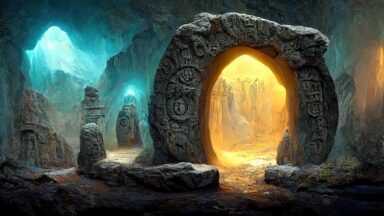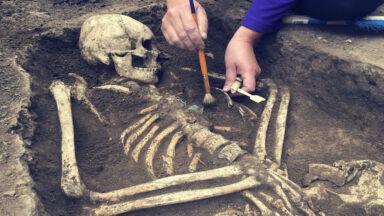Indonesian Pyramid May Be Definitive Proof of a Lost Civilization

A massive pyramidal structure on the Indonesian island of Java was found to be man-made, after drilling samples returned evidence of a hidden, subterranean temple below layers of vegetation and soil. The structure might predate the oldest megalithic site on Earth, Göbekli Tepe, by millennia.
Though the pyramid has been known to locals as the Gunung Padang megalithic site for some time, it’s now being acknowledged by mainstream archeology as a possible “ancient temple.”
The pyramid is located atop Mount Padang in West Java, covered by a dense layer of trees and foliage that have amassed over the thousands of years since it was built. In addition to the tier of flora, a number of soil and rock layers have developed over the course of its history leading to its obfuscation and making it appear as if it might be a natural formation.
Danny Natawidjaja, Ph.D., a senior geologist for the Research Center for Geotechnology at the Indonesian Institute for Sciences, has been studying the pyramid for years, saying he believes it may be evidence of an ancient, lost civilization predating any we’ve known.
“Old stories about Atlantis and other great, lost civilizations of prehistory, long dismissed as myths by archaeologists, look set to be proved true,” Natawidjaja told Graham Hancock in a 2014 interview.

Natawidjaja and colleagues first noticed artificial signatures in the temple when comparing it to the eroded, natural landscape nearby. They also spotted particular characteristics in the basaltic standing stones atop the pyramid, that frame its stepped terraces. These can be found next to other rock columns and arrangements that form distinct walls, paths, and spaces clearly hinting at an anthropogenic origin. This layer alone dates back 3,500 years, with subsequent layers getting continually older the further archeologists dig.
In a recent report by LiveScience, Natawidjaja revealed the results of a study that incorporated ground-penetrating radar, x-rays, tomography, and core samples showing the pyramid’s age. The latest interest in his findings among the academic community may encourage the Indonesian government to allow further excavation – something it’s been averse to in the past.
“Underneath the surface, to a depth of about 10 feet (3 m), was a second layer of similar rock columns, thought to be 7,500 to 8,300 years old. And a third layer, extending 49 feet (15 m) below the surface, is more than 9,000 years old; it could even date to 28,000 years ago, according to the researchers. Their surveys also detected multiple chambers underground,”
Today, the top of the pyramid is used for prayer like it probably was thousands of years ago. And now that mainstream archeology is finally willing to accept that it is in fact, a man-made structure, we may be on the precipice of a true paradigm shift in our perception of human history.
For more on anomalous archeological sites around the world, check out Ancient Civilizations :
This Hindu Prophecy is Eerily Similar to Nostradamus' Predictions

The Kalki Avatar Prophecy states that Vishnu will appear in his 10th form to end the Kali Yuga, Nostradamus predicted a similar event.
According to the Hindu Yugas, we are currently living in the Kali Yuga – the Iron Age, Dark Age, or the lowest point in spiritual consciousness and moral virtue. Despite technological advancement, our current age has been marked by war, inequality, and scarcity. And though this may be a subjective observation, there are certainly some aspects that carry some validity.
While the start and end dates of the Kali Yuga are disputed and somewhat ambiguous, many believe we are nearing the end, when Kalki, the final avatar of Vishnu, is supposed to make his messianic return to Earth. This return will usher in the Satya Yuga, our upward journey back to the pinnacle of truth and cosmic order, known as dharma. Many believe we are on the precipice of experiencing the return of this enlightened being and there is even evidence that Nostradamus’s predictions corroborate this Hindu prophecy.




































